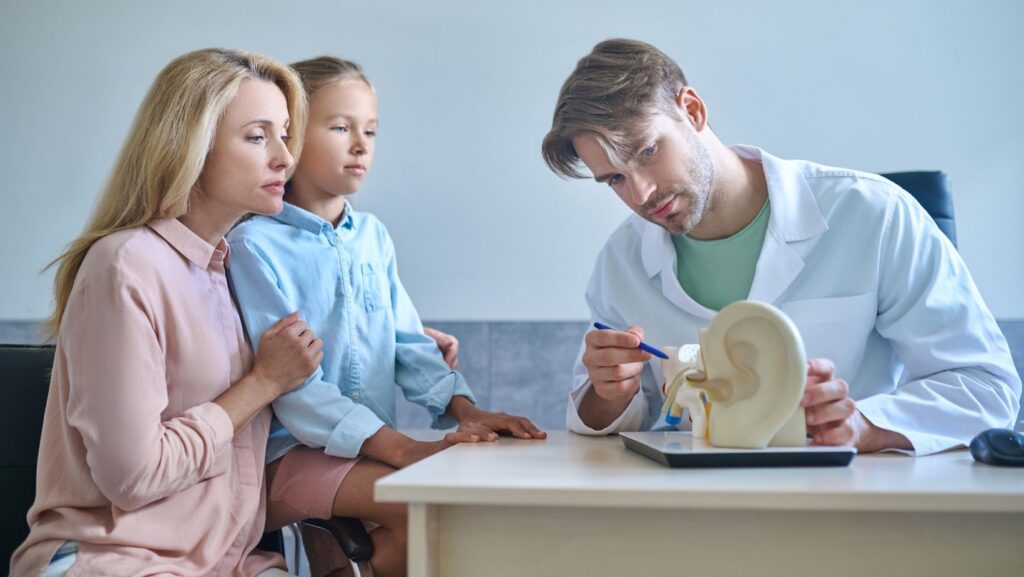Auditory processing plays a crucial role in a child’s learning and communication. For children with auditory processing challenges, therapy can be essential. Making auditory processing therapy fun and engaging is key to helping children improve their listening skills and comprehension.
Incorporating games and interactive activities into therapy sessions can transform the experience for kids. These activities not only target specific auditory processing skills but also keep children motivated and excited about learning. From memory games to storytelling exercises, there are numerous ways to make therapy enjoyable.
Creating a supportive and enriching auditory environment at home and in therapy sessions is equally important. This can involve using music, audiobooks, and other sound-based tools to stimulate auditory processing development. By combining these elements with professional therapy for auditory processing disorder, parents and therapists can create a comprehensive approach to improving a child’s auditory skills.
The information shared here is for educational purposes and should not be relied upon as medical advice. Consult your healthcare provider for guidance.
Key Takeaways
- Fun activities enhance auditory processing therapy effectiveness for children
- Interactive games and exercises improve listening skills and comprehension
- Creating an enriching auditory environment supports overall auditory development
Engaging Auditory Activities for Children
Auditory processing therapy can be transformed into an enjoyable experience for children through creative activities that target specific skills. These exercises blend fun and learning to improve listening abilities and communication.
Incorporating Play in Therapy Exercises
“Simon Says” is an excellent game for developing auditory attention and following directions. Children must listen carefully to instructions and only act when prefaced with “Simon says.”
Sound Bingo enhances auditory discrimination. Players match sounds they hear to pictures on their bingo cards. This game can be customized with various themes like animal noises or household sounds.

Musical Chairs combines movement with auditory processing. As music plays, children move around chairs. When it stops, they must quickly find a seat, practicing auditory vigilance.
“I Spy” can be adapted for auditory skills by describing objects by sound rather than appearance. This encourages children to think about how things sound and strengthens descriptive language skills.
Strengthening Active Listening and Comprehension
Sound scavenger hunts encourage children to identify and locate specific noises in their environment. This activity sharpens auditory focus and can be done indoors or outdoors.
Song lyrics challenges involve filling in missing words from familiar songs. This exercise boosts auditory memory and language comprehension.
Rhyming word activities help develop phonemic awareness. Children can take turns thinking of words that rhyme, creating a fun back-and-forth game.
“Guess the Sound” involves playing recordings of various noises for children to identify. This game improves auditory discrimination and can include everyday sounds or more challenging options.
Enhancing Auditory Memory and Sequencing Skills
“Repeat After Me” games test auditory memory. Start with short phrases and gradually increase complexity. This activity can incorporate silly sentences to keep children engaged.
Story recall exercises involve reading short tales and asking children to retell them. This improves listening comprehension and narrative skills.
Rhythm copying activities using clapping or simple instruments help with auditory sequencing. Children must replicate increasingly complex patterns.
“Follow the Directions” tasks require children to complete a series of actions in order. This strengthens both auditory memory and sequencing abilities.
Creating an Enriching Auditory Environment
A well-designed auditory environment supports effective therapy for children with auditory processing difficulties. Optimizing the physical space and incorporating sensory integration techniques can enhance learning outcomes.
Mitigating Distractions and Optimizing Learning Spaces
Reduce background noise by using sound-absorbing materials like carpets, curtains, or acoustic panels. Choose a quiet room away from busy areas for therapy sessions. Ensure proper lighting to minimize visual distractions that may interfere with auditory focus.

Use noise-cancelling headphones when necessary to help children concentrate on specific auditory tasks. Organize the therapy space with minimal visual clutter to promote attention to auditory stimuli.
Consider using a visual schedule or timer to structure sessions and help children anticipate transitions between activities. This can reduce anxiety and improve engagement with auditory exercises.
Utilizing Sensory Integration Techniques
Incorporate movement-based activities to support auditory processing. Combine listening tasks with gross motor skills like jumping, spinning, or balancing to engage multiple senses and improve focus.
Use tactile elements during auditory exercises. For example, have children manipulate textured objects while listening to sound patterns or sorting sounds. This multi-sensory approach can enhance auditory discrimination and attention.
Introduce calming sensory inputs before or during auditory tasks. Gentle swinging, deep pressure, or using weighted items can help regulate children who are over-responsive to auditory stimuli.
Create a “sensory diet” that includes a mix of auditory, visual, and tactile activities throughout therapy sessions. This balanced approach supports overall sensory processing and integration.
Conclusion
Auditory processing therapy can be both effective and enjoyable for children. By incorporating fun activities and games, therapists and parents can help kids develop crucial listening skills. Interactive exercises that feel like play rather than work encourage engagement and progress. With creativity and consistency, auditory processing therapy can become an exciting part of a child’s developmental journey.

